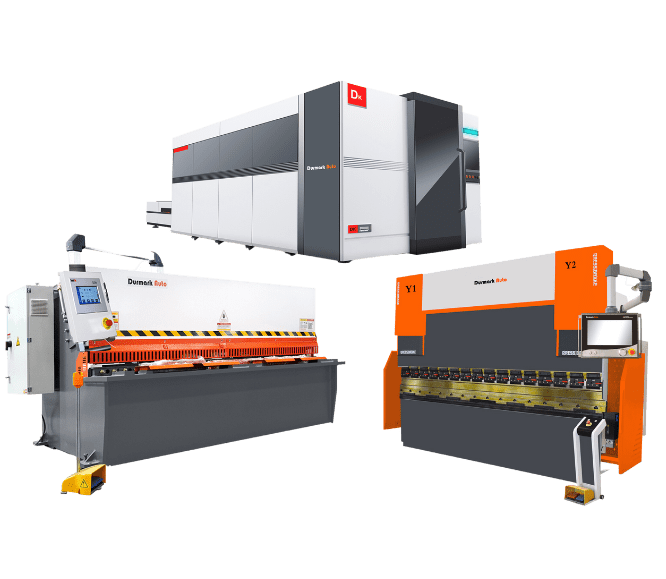
Request a Quote

Request a Quote

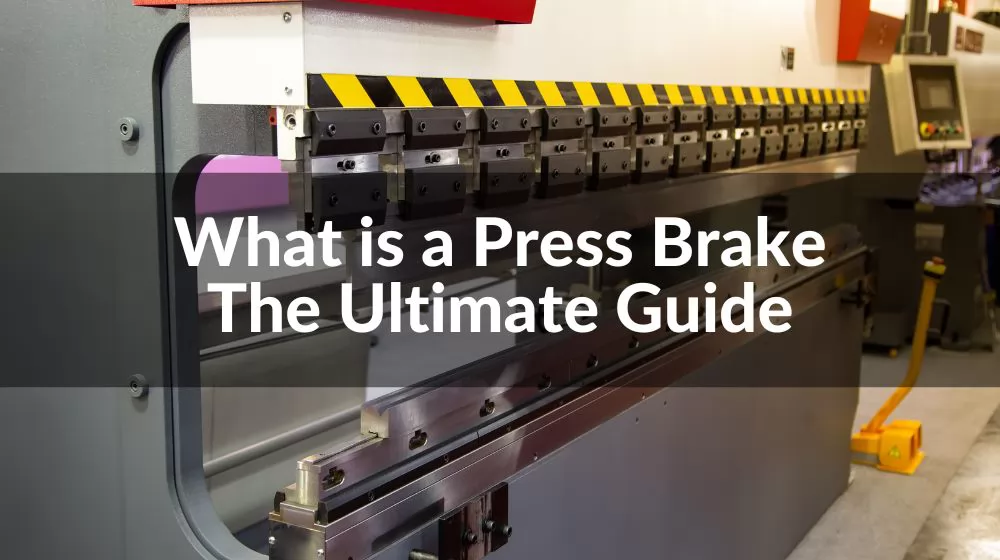
In the realm of metal fabrication, the press brake plays a pivotal role.
The press brake produces precise bending in the workpiece through force, molds, and specialized tools. Factors such as toolings, material characteristics, bending radius, and bending methods can all affect the accuracy of bending. According to machine design and specific application requirements, bending can be carried out through various driving forces, such as mechanical, pneumatic, hydraulic, or servo-electric. However, the main sources of bending power currently used are hydraulic, servo, and electric.
As a leading press brake manufacturer, Durmark is here to demystify this crucial piece of machinery for you.
A press brake is a specialized machine tool designed for bending sheet and plate material, primarily sheet metal. This is accomplished by clamping the workpiece, the sheet or plate to be bent, between a corresponding pair of punch and die. These tools are integral to the metalworking industry, with applications spanning various sectors such as manufacturing, construction, and the automotive industry. Each press brake has a different tonnage, or force capacity, as well as a varying range of lengths to accommodate different sizes of metal sheets.
Press brakes are versatile machines that are used in numerous applications across a variety of industries. In the manufacturing sector, press brakes are often employed in the fabrication of parts for machinery, vehicles, and other equipment. Manufacturers rely on these machines to create precise bends in sheet metal, shaping them into the required parts for their products.
In the construction industry, press brakes are used in the making of components for buildings, bridges, and other infrastructure projects. They play a crucial role in shaping the structural steel that forms the skeleton of many modern buildings. They can also be used in the fabrication of ductwork for HVAC systems.
The versatility and power of press brakes make them an indispensable tool in any context where accurate and consistent bends in sheet metal are required.
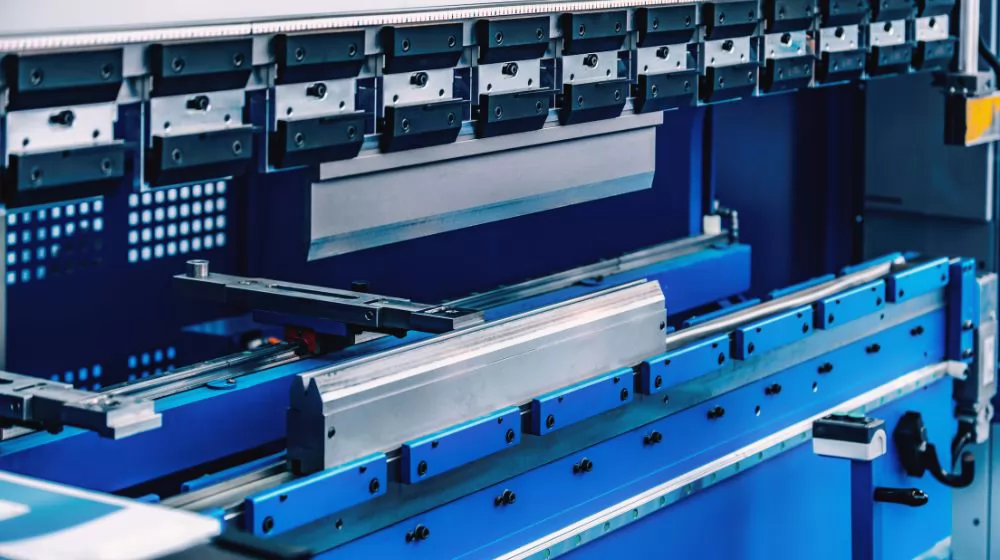
An NC (Numerical Control) Press Brake is a type of press brake machine that employs numerical input to guide its operations. This kind of machine allows for accurate and repeatable bends in the metalworking process, which is essential in industries where precision is critical.
The operator of an NC press brake inputs the bending specifications into the machine, such as the angle of the bend and the position of the bend on the sheet metal. The machine then automatically positions the punch and die according to these specifications, ensuring a high degree of precision and consistency in the bending process. This not only increases the quality of the finished product but also improves the efficiency of the manufacturing process.
A CNC (Computer Numerical Control) Press Brake is a more advanced version of a press brake machine. Instead of relying on manual input, a CNC Press Brake utilizes a computer to control the bending process. This leads to a highly accurate and efficient operation.
CNC technology brings a level of automation to the bending process that isn't possible with manually operated machines. This means that more complex shapes and designs can be achieved with a CNC press brake. In addition, because the machine does most of the work, there's less chance of operator error, leading to higher quality products and more efficient production.
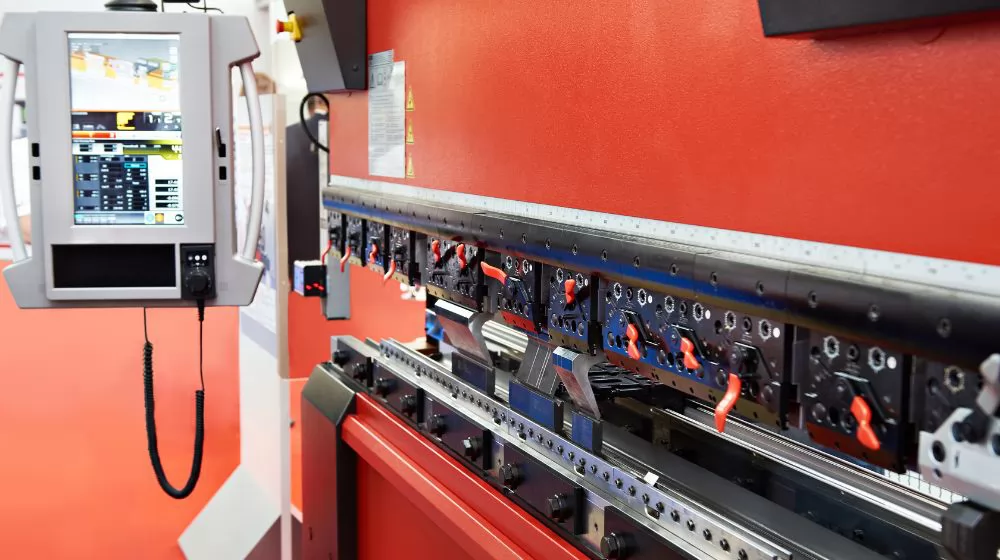
The operation of a CNC Press Brake involves several steps. First, the machine operator inputs the desired bend specifications into the machine's computer system. This includes data like the angle of the bend, the position of the bend on the sheet metal, and the force required for the bend.
Once the specifications have been inputted, the machine positions the metal sheet between the punch and die according to these specifications. The machine then applies force, bending the sheet to the desired angle. Because the machine operates automatically based on the inputted specifications, a CNC Press Brake is able to produce bends that are highly accurate and consistent. This makes it an invaluable tool in industries where precision and repeatability are paramount.

A mechanical press brake consists of various key components such as a workbench, ram, electric motor, flywheel, clutch, and brakes.
The flywheel is propelled by an electric motor and connected to the gear shaft through a clutch, ensuring the continuous motion of the ram.
Brakes are employed to halt the gear shaft's movement when the drive shaft disconnects from the flywheel.
Maintenance and operation of mechanical press brakes are relatively straightforward due to their simple component design.
Furthermore, these press brakes can handle substantial tonnages, sometimes exceeding the rated value by two to three times.
However, mechanical press brakes lack precision as the ram must complete the entire bending cycle once it commences, with no control over its speed.
This poses risks for operators, impacts bending accuracy, and may result in wasted workpieces.
Hydraulic press brakes operate by utilizing two synchronized hydraulic oil cylinders to drive the ram's movement.
With a history of reliability and safety, hydraulic press brakes are widely employed in industrial production.
The hydraulic press brake incorporates a light curtain safety device that allows for instant stopping of the ram's motion, reversing the operation stroke, and controlling the speed.
When equipped with a CNC system, hydraulic press brakes possess the capability to intelligently handle the bending of diverse materials, considering factors such as thickness, length, tonnage, and angle.
Hydraulic press brakes are further categorized into torsion shaft press brakes, mechanical hydraulic press brakes, and electro-hydraulic press brakes.
One drawback of hydraulic press brakes is their inability to exceed the tonnage range specified by the rated value.
Moreover, these press brakes may entail higher costs and require more frequent maintenance.
Pneumatic press brakes primarily rely on compressed air or gas as their power source.
The generated air pressure applies tonnage to the ram, facilitating the bending process.
The machine supplies compressed air to the cylinder or pipe connected to the pressure mechanism.
As the gas fills the system, the pressure drives the tooling downward.
Once the movement is complete, the gas is discharged through the exhaust valve, allowing the brakes to return to their initial position.
Although pneumatic press brakes cannot match the tonnage provided by hydraulic press brakes, they offer exceptional speed and cleanliness during operation.
The servo press brake is powered by two synchronous servo motors, which supply energy through belts and pulleys.
This press brake exhibits remarkable flexibility, allowing for precise control over the stroke and speed of the ram.
Typically, servo press brakes are suitable for bending small quantities of customized workpieces.
Moreover, they handle relatively smaller tonnages compared to other types.
The operational sound of servo press brakes is significantly low, ensuring noise-free operation.
When bending commences, the servo motors initiate movement, and they cease once the process concludes.
This feature helps conserve power and reduce production costs.
However, electric press brakes tend to be pricier than hydraulic ones and may not be suitable for heavy-duty applications.
Additionally, servo press brakes do not incorporate oil cylinders, eliminating concerns regarding oil leakage and cleaning.
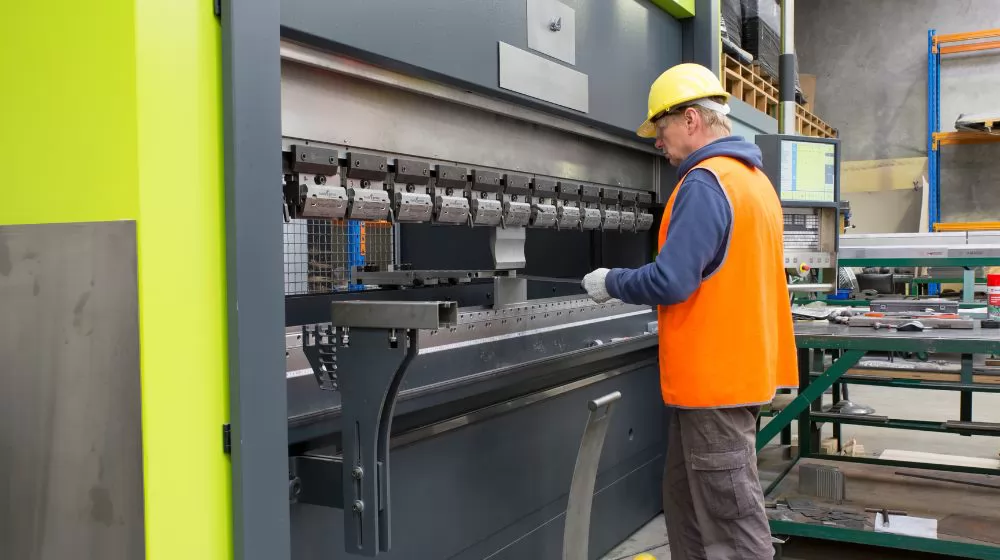
A press brake works by applying a significant amount of force to a workpiece (usually a sheet or plate of metal) that's placed between a matching punch and die set. This force causes the workpiece to bend to the desired shape or angle. Here's a step-by-step look at how a press brake works:
The operator first places the workpiece onto the bed of the press brake, aligning it with the die.
The operator then activates the press brake, which causes the punch (attached to the upper beam of the press brake) to descend towards the die. The punch pushes the workpiece into the die, and the force of this action causes the workpiece to bend.
As the punch pushes the workpiece into the die, the material experiences a bending process. The location and angle of the bend are determined by the position and shape of the punch and die.
Once the desired bend has been achieved, the punch retracts, and the bent workpiece can be removed from the machine.
Throughout this process, the operator can control the force applied, the position of the punch, and the angle of the bend by adjusting the settings on the press brake. This allows for a high degree of precision and versatility in the bending process.
Modern press brakes, especially CNC (Computer Numerical Control) press brakes, can automate much of this process. The operator only needs to input the desired bend specifications into the machine's control system, and the machine will automatically adjust its settings and carry out the bending process accordingly.
It's important to note that while this process might seem straightforward, operating a press brake requires skill and training. Operators need to understand the properties of the material they're working with, the capabilities of the press brake, and the safety procedures they must follow.
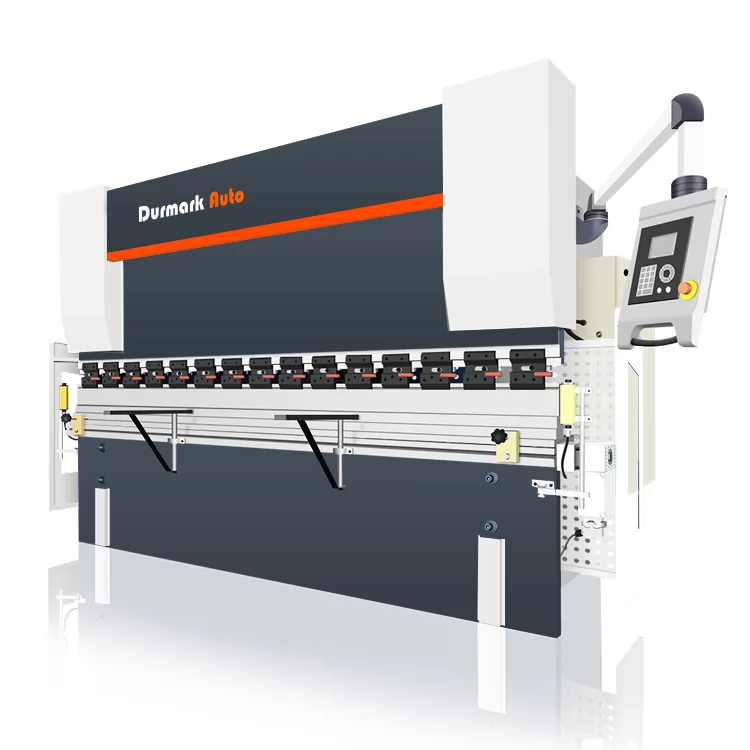
The performance of a press brake is contingent upon a multitude of factors, each playing a significant role in the overall output and efficiency of the machine. Here are several key factors that can influence the performance of a press brake:
The type of material being bent, including its thickness and hardness, greatly influences the performance of a press brake. Different materials require different amounts of force to bend, and some materials may be more prone to cracking or other forms of damage during the bending process.
The setup of the press brake, including the alignment of the punch and die and the settings used for the bending process, can greatly impact the performance of the machine. A well-aligned and well-calibrated machine will generally perform better than one that is not.
The quality and condition of the punch and die used in a press brake can also affect performance. Wear and tear on these components can lead to less accurate bending, and using the wrong punch or die for a particular job can result in poor results.
The skill and experience of the operator can greatly affect the performance of a press brake. An experienced operator will know how to properly set up and operate the machine for optimal results, and they will also be able to troubleshoot and resolve any issues that may arise during the bending process.
Regular maintenance and proper lubrication are critical for the optimal performance of a press brake. A well-maintained machine is less likely to experience mechanical issues and is typically more efficient and reliable.
The type of press brake used can also impact its performance. For example, hydraulic press brakes are known for their power and versatility, while mechanical press brakes are typically faster and more accurate.
The control system of a press brake, particularly in the case of CNC press brakes, can significantly affect the performance of the machine. A high-quality control system can offer better precision, flexibility, and ease of use.
Environmental conditions, such as temperature and humidity, can impact the performance of a press brake. For example, extreme temperatures can affect the viscosity of hydraulic fluid in hydraulic press brakes, potentially impacting their performance.
These factors, among others, contribute to the performance of a press brake, and understanding them can help operators and owners to optimize the use of their machines.
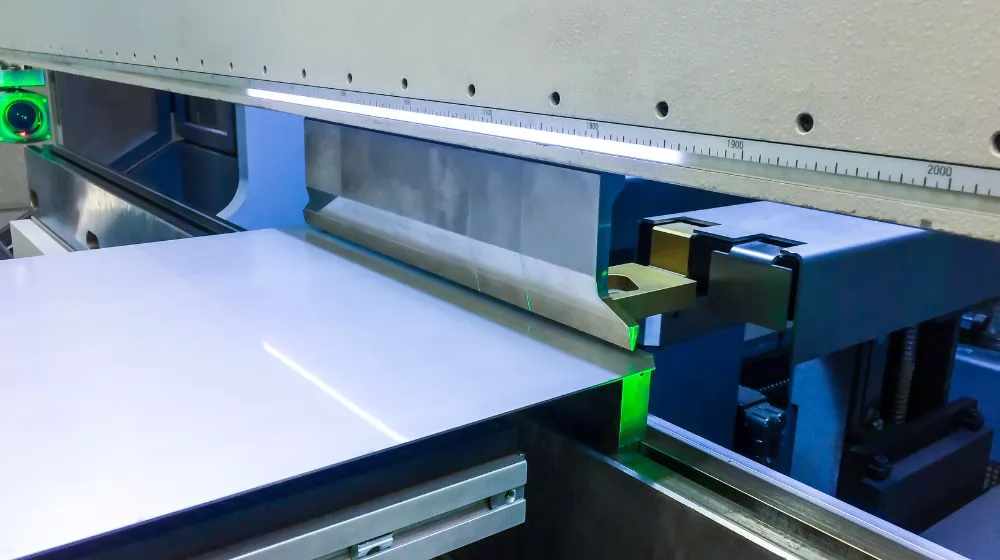
A bending die is a crucial component of a press brake that's used in the metal bending process. It's typically found on the bed of the press brake and serves as the lower half of the tooling setup. The function of the bending die is to guide and shape the workpiece as it's being bent.
Bending dies come in various shapes and sizes to create different bend angles and radii. The design of the die – such as the width of the opening and the angle of the die – determines the angle of the bend and the inner radius of the bend on the workpiece.
Choosing the right bending die for a specific application is crucial for achieving accurate and efficient bending results. The choice of die is dependent on factors such as the type and thickness of the material being bent, the desired bend angle, and the specific requirements of the job.
The press brake mold, commonly known as the tooling, comprises the punch and die.
bending operation and is usually tapered to facilitate easy entry into the workpiece. The die, which is fixed on the bed of the machine, receives the punch and directs the bending process according to the required specifications.
Hydraulic press brake tooling is typically divided into upper and lower molds, which are used for sheet metal stamping forming and separating molds. The materials commonly used for these molds include carbon tool steel, low alloy tool steel, high carbon high chromium or medium chromium tool steel, medium carbon alloy steel, high-speed steel, base steel, cemented carbide, and steel bonded cemented carbide, among others.
Commonly used carbon tool steels in hydraulic press brake tooling are T8A, T10A, which offer good processing performance and affordability, but have poor hardenability and red hardness, leading to significant heat treatment deformation and lower bearing capacity.
Low-alloy tool steel is used to reduce the tendency of quenching deformation and cracking, improve the hardenability of steel, and offer better wear resistance.
High-speed steel is used for its exceptional hardness, wear resistance, and compressive strength among die steels for hydraulic press brakes, thus offering a high bearing capacity.
Cemented carbide is used for its superior hardness and wear resistance over other types of hydraulic press brake clamp die steel. However, it has poor bending strength and toughness. The cemented carbide used as the mold of the hydraulic press brake clamp is typically a tungsten-cobalt type. Steel-bonded cemented carbide is made by adding a small amount of alloying element powder (such as chromium, molybdenum, tungsten, vanadium, etc.) to iron powder as a binder, using titanium carbide or tungsten carbide as the hard phase, and sintering by powder metallurgy.
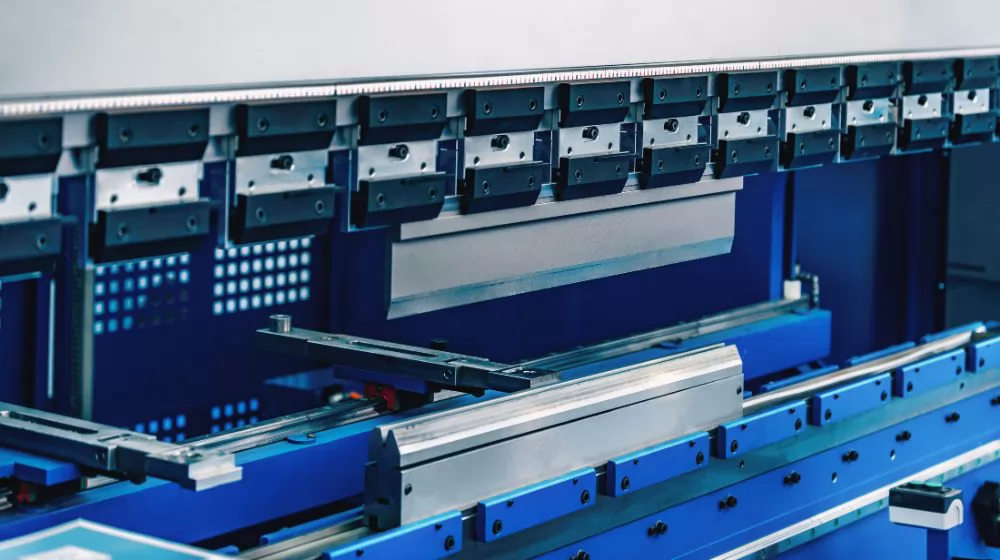
There are several types of press brake molds used in various bending applications. Some common types include:
V-die: This is the most commonly used press brake mold, consisting of a V-shaped groove. It allows for precise bending of straight flanges and is available in different widths and depths to accommodate various material thicknesses.
U-die: This mold features a U-shaped groove, which is useful for creating rounded bends or channels in the workpiece. Like V-dies, U-dies come in different sizes to match specific bending requirements.
Gooseneck die: This mold has a curved shape resembling a gooseneck, allowing for the formation of large-radius bends. It is commonly used in applications such as HVAC ductwork and architectural metal fabrication.
Hemming die: Hemming dies are used for creating hemmed edges on the workpiece, which involves bending the material back onto itself. They are often utilized in the automotive industry for creating secure and visually appealing seams.
Offset die: An offset die consists of two or more sections with varying heights. It enables the production of stepped or offset bends, where the material is bent at different angles or levels along its length.
Radius die: This type of die is used to achieve precise bends with a specific radius. It is commonly employed when tight or consistent curved bends are required in the workpiece.
Multi-V die: A multi-V die incorporates multiple V-shaped grooves of different sizes in a single die. It provides versatility and allows for a range of bending options without changing the die.
Flattening die: Flattening dies are used to flatten or straighten previously bent sections of the workpiece. They are beneficial when corrections or adjustments are needed after initial bending operations.
These are just a few examples of press brake molds, and there are many other specialized molds available for specific applications. The selection of the appropriate mold depends on factors such as the desired bend angle, material type, thickness, and project requirements.
Understanding the ins and outs of a press brake is key to successful metal fabrication. At Durmark, we pride ourselves on not just providing top-of-the-line press brake machines but also ensuring our customers are well-informed about their machinery. For more detailed insights and to explore our wide range of press brakes, visit our website at durmark-machinery.com. Elevate your metal fabrication process with Durmark's press brake solutions today!
Read More:
Top 10 Press Brake Machine Manufacturers in 2023
What is a Shearing Machine? Working Principle and Application
.png)


